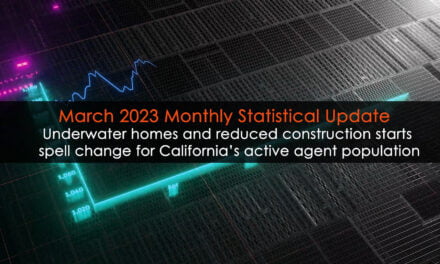As a real estate professional, you are probably used to saying it, but this is not a drill: Now is the time to sell.
How does first tuesday say 2018 is the best time to sell with such certainty? The real estate market moves in predictable cycles of rising and falling sales, and can be divided into three ideal phases:
- the buy phase, the best time to buy property, characterized by:
- low prices;
- low interest rates;
- low sales volume;
- high inventory; and
- few buyers to compete with for homes;
- the hold phase, the months and years between the buy and sell phase, when an investor holds their property to obtain the largest profit; and
- the sell phase, the best time to sell property, characterized by:
- still-rising prices;
- signals of a coming economic recession, sent by a declining yield spread;
- low inventory;
- rising interest rates; and
- slow sales volume.
In mid-2018, all the factors signal we are in the sell phase of this real estate cycle.
1) The yield spread is falling
The yield spread is a mathematical abstraction that accurately forecasts economic movement — and more specifically recessions — one year forward. It is the difference between the rate on:
- the 10-year Treasury Note; and
- the 3-month Treasury Bill.
Together, these two rates tell us the Federal Reserve’s (the Fed’s) plans for the economy, along with how bond investors in the private market are reacting and preparing.
Whenever the spread between these two rates dips below one and approaches zero, a recession in the coming 12 months is very likely. When it dips below zero, the chances of a recession are almost certain.
In June 2018, the yield spread was exactly 1.0. This follows a long falling trend that began in 2014, reflective of the Fed’s longstanding plans to cool off the economy and induce a moderate recession toward the end of this decade.
What this means for real estate is that when the yield spread hits zero — likely to occur by mid-2019 — an economic recession will arrive in 2020. As that occurs, the impact across the housing market will be significant.
2) Home sales volume is flat
Since 2015, home sales volume in California has remained about the same. While not as bad as a falling number of home sales, it does not bode well for the future.
Today’s level home sales volume is due to a number of factors, including a lack of inventory available to homebuyers in the low- and mid-tier. Also holding back sales volume are rising interest rates, which reduce buyer purchasing power and discourage homebuyers and sellers.
What our flat sales volume says most loudly is that support for home prices is absent. And yet, in 2018, home prices continue to rise.
3) Home prices are still rising
California home prices have increased at a steady annual clip of 8%-10% since 2015.
Following years of ever-rising prices, homeowners may start to think prices will never drop. Eternal optimists, the memories of real estate players are short, and homeowners persuaded their home values will continue to rise at this pace have forgotten the 2008 recession and extended recovery that set in just a decade ago.
But today’s rising prices do not reflect any supportive market forces that will continue to prop up prices after enthusiasm has worn off and reality sets in. Examples of factors that would support rising prices are rising sales volume or falling interest rates, neither of which are present in 2018.
Therefore, a drop in prices in the next 12 months is very likely, making 2018 the best time to sell.
Echoes of history: evidence from the real estate cycle
Everyone wants to know the best time to buy and sell real estate in order to maximize profit. So, if predicting the housing market is as simple as first tuesday makes it out to be, why doesn’t everyone do it?
The majority of homebuyers and sellers simply see the signs too late to react appropriately. But, just like in the years leading up to the housing bust of 2007-2008, the same signs are signaling another downturn today.
So what can you, as a real estate professional, likely homeowner and maybe even a real estate investor yourself, do about these signs?
Think of the combined factors of today’s declining yield spread, flat sales volume and still-rising prices as a yellow traffic light. The housing market is quickly approaching the intersection, when the real estate cycle will turn from its sell phase to a hold and finally the next buy phase.
At this point, you have two choices, you can either:
- speed up your timeline and get ready to sell your property within the next 12 months; or
- prepare to stop and hold onto your property for a while, as once the sell phase ends in 2019, prices will dip and we won’t see them return to today’s heights for several years.
Wise real estate agents and brokers will also warn their investor clients of today’s limited sell phase. For those who listen, their agents will cash in on additional transaction fees in 2018 and set aside the profits to make it through the coming two-to-three years of lower prices and sales volume — until the next buy phase arrives.
Related article:















Clear eyed and down to the ground as usual. Too many people (CAR/NAR too) want to believe in forever balloons. Your analysis remains an excellent anchor to reality. Thank you FT.